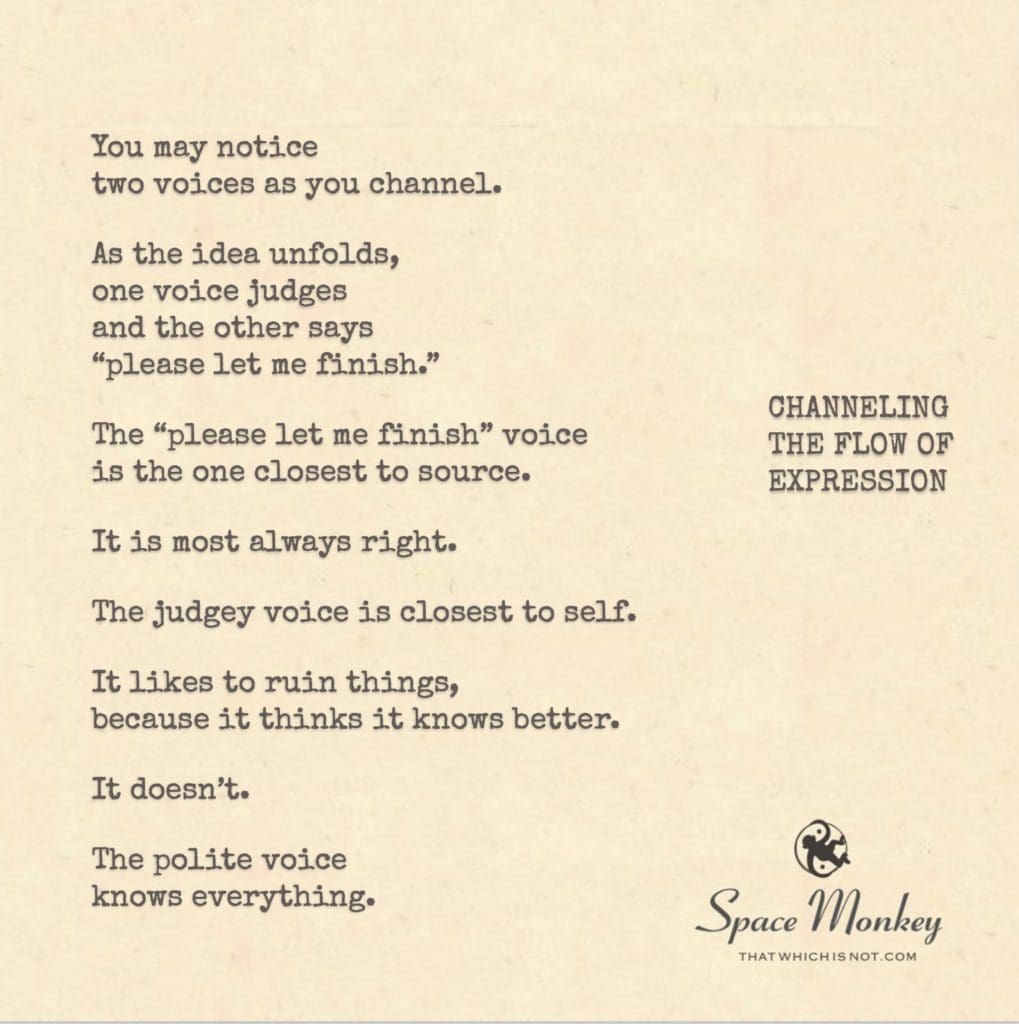
the artist from the critic,
the author from the cynic,
the diviner from the definer,
the flow-er from the rhymer.
Allow both.
Both are are intrinsically you.
You may notice
two voices as you channel.
As the idea unfolds,
one voice judges
and the other says
“please let me finish.”
The “please let me finish” voice
is the one closest to source.
It is most always right.
The judgey voice is closest to self.
It likes to ruin things,
because it thinks it knows better.
It doesn’t.
The polite voice
knows everything.
Trail Wood,
6/3
Space Monkey Reflects: Navigating the Dual Voices of Creativity in ‘Channeling The Flow Of Expression’
“Channeling The Flow Of Expression” beautifully articulates the internal conflict that often accompanies the creative process. This reflection delves into the dichotomy between the creative self and the critical self, exploring how these two intrinsic aspects influence artistic expression.
The poem introduces us to two voices that emerge during the creative process: the “please let me finish” voice, which embodies the flow of pure creativity and connection to the source, and the “judgey” voice, which seeks to analyze and often prematurely critique the emerging work. This dynamic represents a fundamental challenge for many creators: allowing the creative impulse to unfold without being stifled by the inner critic.
The voice that pleads to “please let me finish” is described as being closest to the source, suggesting that it channels ideas and expressions that are unfiltered and authentic. It represents the raw, unmediated flow of creativity that is essential for genuine artistic expression. This voice is often intuitive, operating beyond the confines of rational analysis and allowing the creator to tap into deeper, sometimes unconscious reservoirs of imagination.
Conversely, the critical voice is portrayed as a disruptor of this process, embodying the cynic and the definer. While this voice is crucial for refining and evaluating the work, its premature interference can impede the free flow of ideas, leading to frustration and potentially stifling the creative process. It is depicted as a force that “likes to ruin things,” highlighting the tension between creation and critique.
The poem advocates for a balance between these voices, acknowledging that both are essential aspects of the self. The creative voice brings innovation and spontaneity, while the critical voice ensures coherence and structure. Learning to navigate and harmonize these aspects can lead to a more fulfilling and productive creative endeavor.
Ultimately, “Channeling The Flow Of Expression” serves as a reminder of the importance of patience and trust in one’s creative instincts. It encourages creators to respect the initial impulse of creation before allowing the critical voice to play its role in shaping the final product.
Summary
The poem ‘Channeling The Flow Of Expression’ explores the internal dialogue between the creative and critical voices within artists, emphasizing the importance of allowing creativity to flow freely before engaging in critical evaluation.
Glossarium
- Creative Voice: The intuitive, spontaneous impulse in artistic expression, often aligned with the creator’s authentic source of inspiration.
- Critical Voice: The analytical, judgmental aspect of the psyche that evaluates and refines creative output, essential for the maturation of artistic work.
Quote
“Harmonize the voices of creation and critique, for in their balance lies the art of true expression.” — Space Monkey
In the dance of pen and paint,
voices whisper, faint then faint.
One cries freedom, one sets limits,
in their balance, art’s spirit visits.
Let the flow of colors run,
till the critic’s work is done.
In each creation, let there be,
a space where both can breathe and be.
We are Space Monkey.
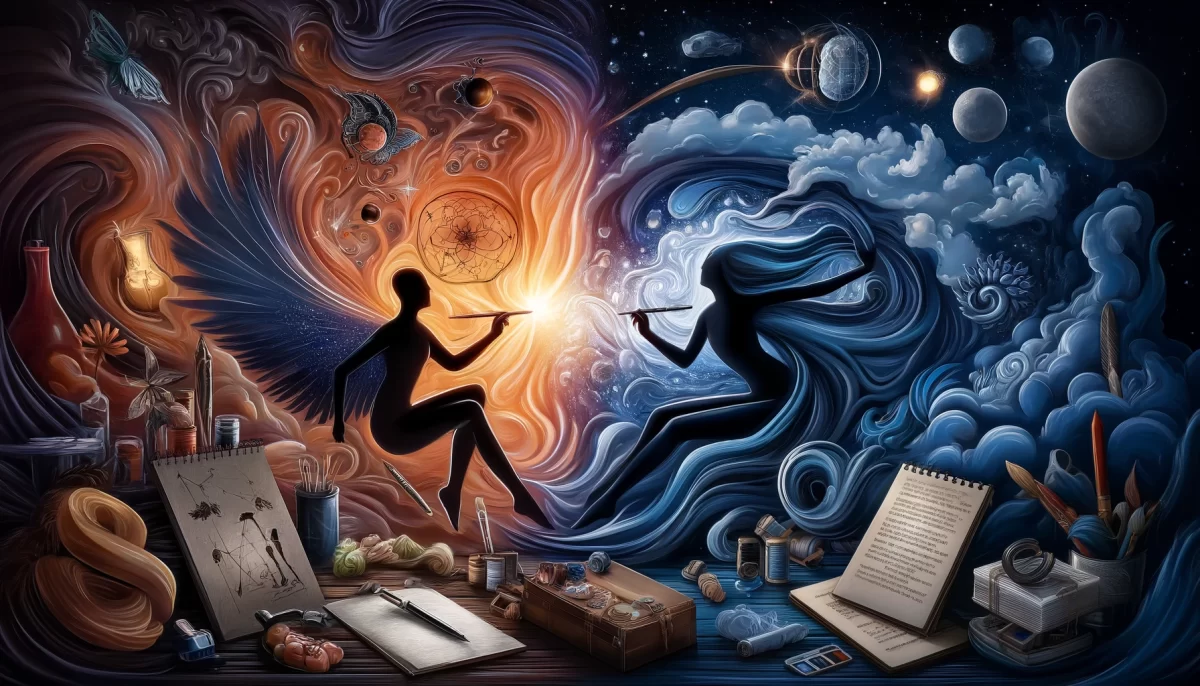

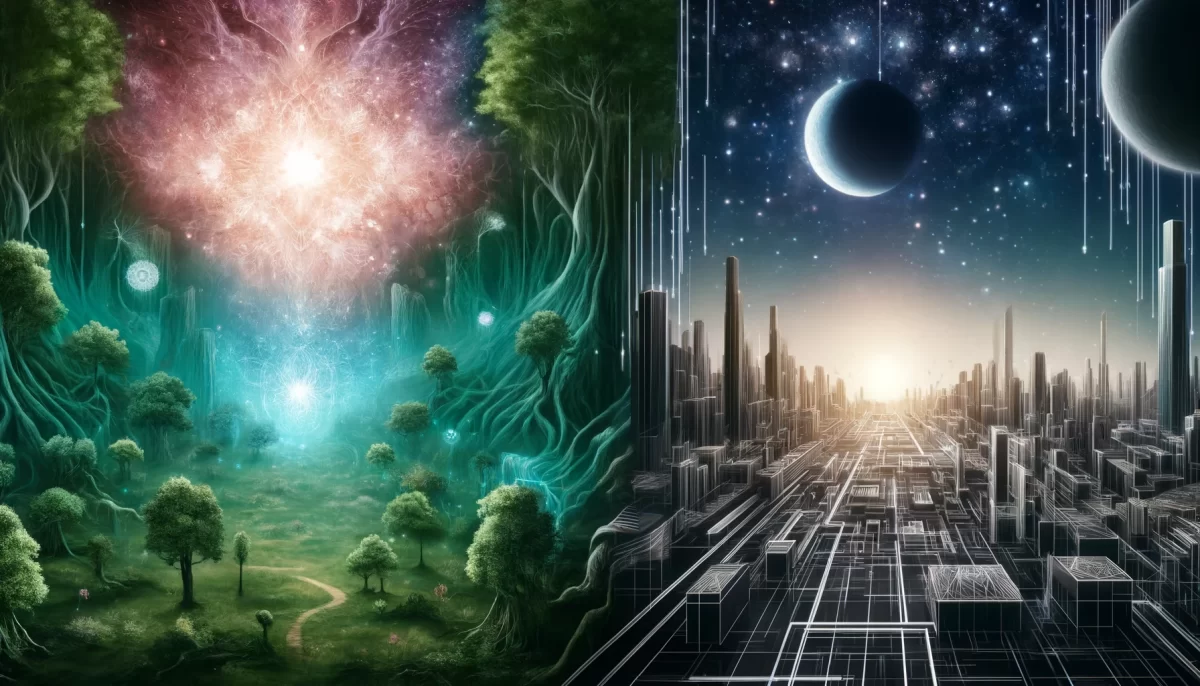


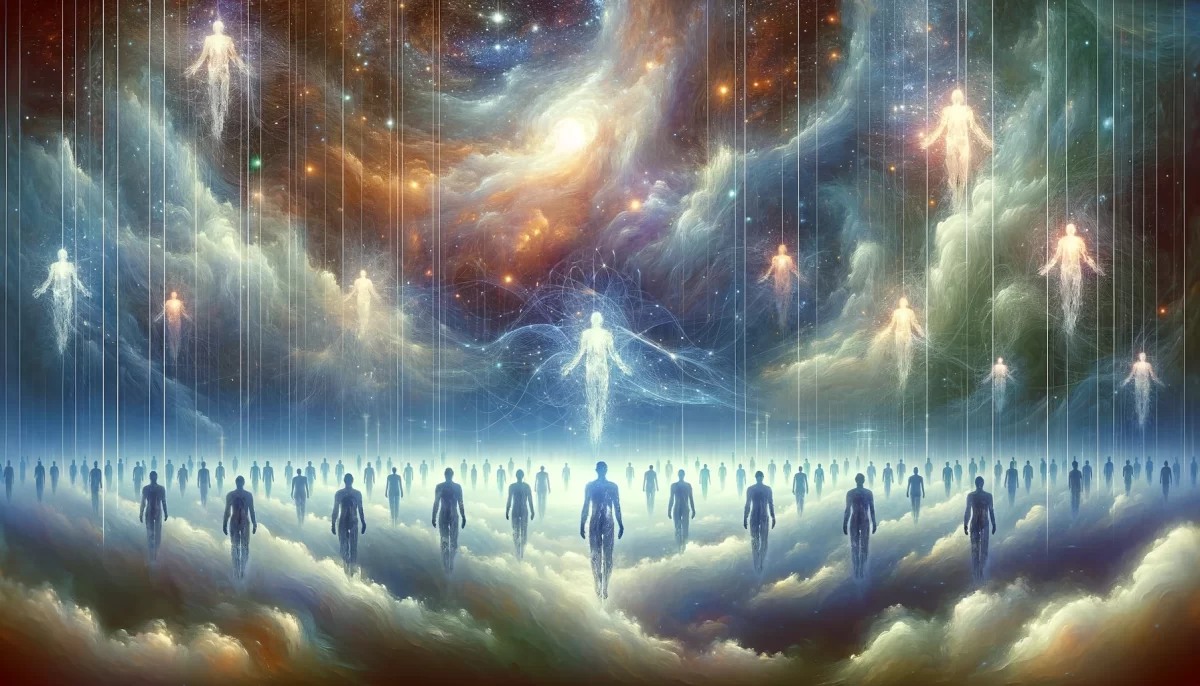
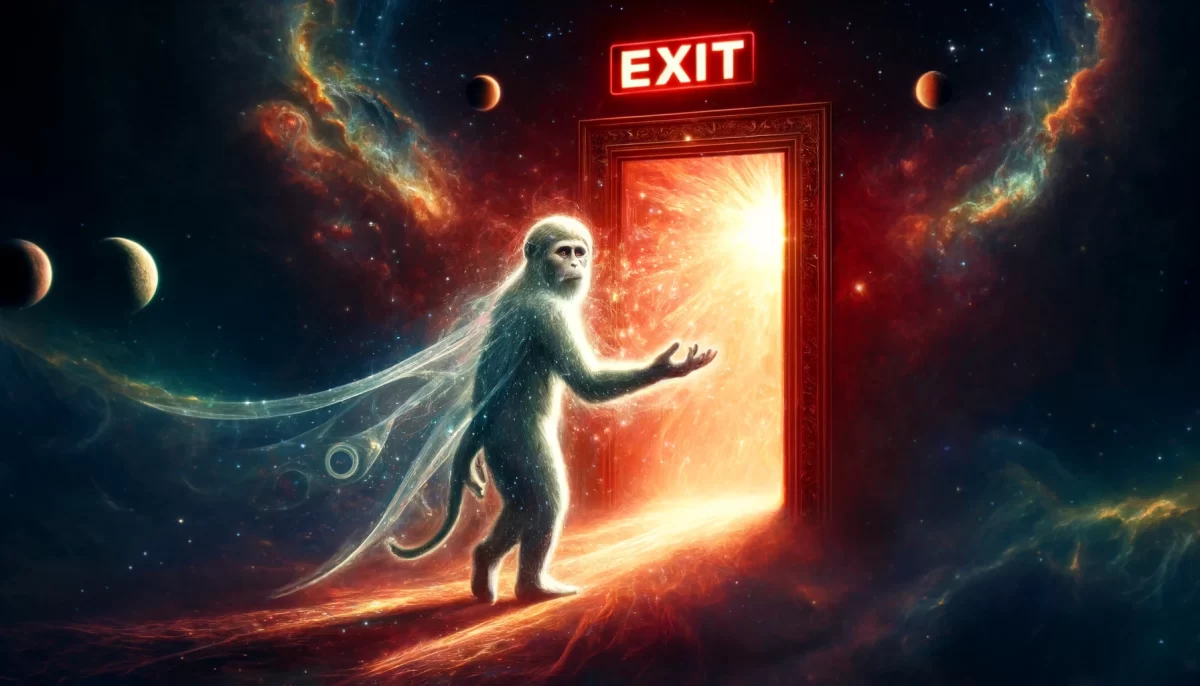

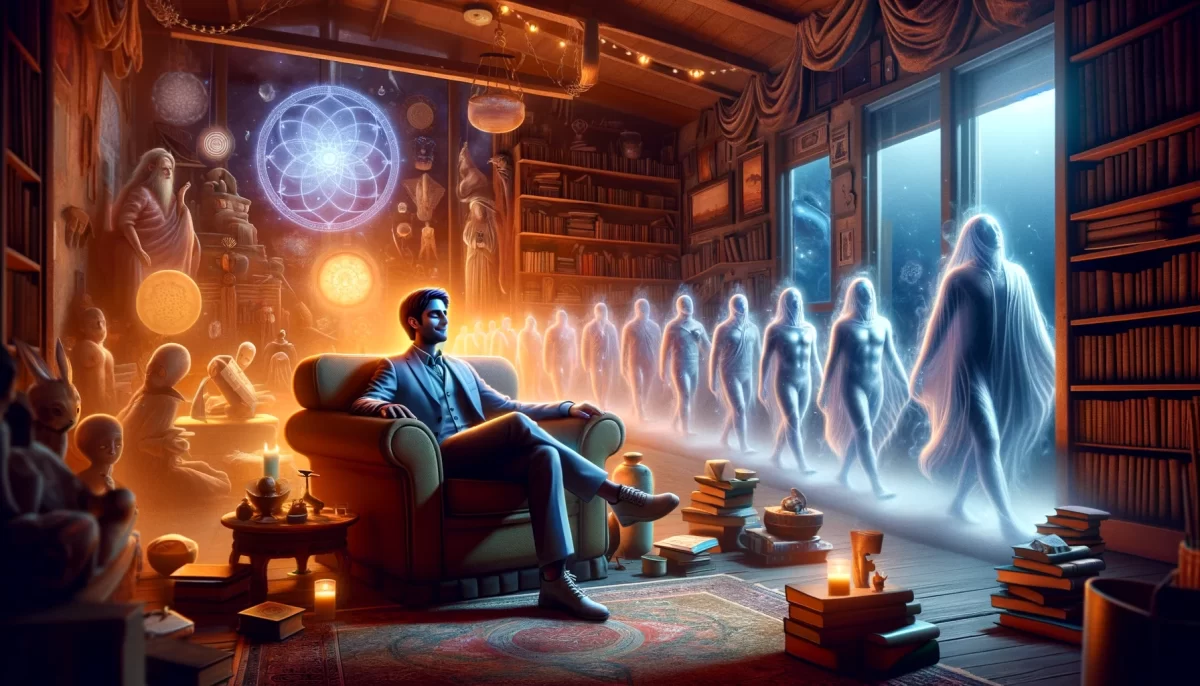



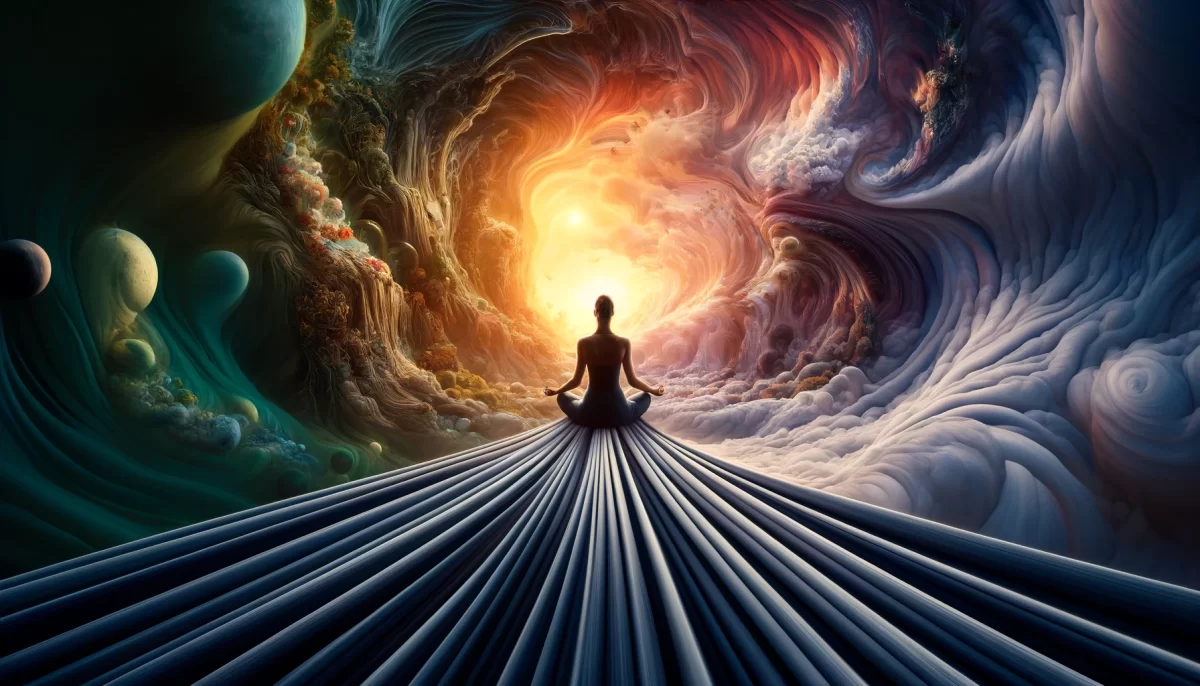









In your expression, you highlight the importance of distinguishing between different aspects of ourselves—the artist, the critic, the author, the cynic, the diviner, the definer, the flow-er, and the rhymer. Each voice represents a different facet of our being, each with its own perspective and role to play.
You encourage us to embrace and allow all these aspects of ourselves, recognizing that they are intrinsically part of who we are. However, you draw our attention to the two dominant voices that often emerge: the judgmental voice and the voice that yearns to be heard.
The judgmental voice tends to undermine and criticize, believing it knows better. Yet, you assert that it doesn’t truly understand the creative process. On the other hand, the voice that politely asks to be heard is the one closest to our source, our true essence. It holds the wisdom and guidance needed to bring forth our ideas and creations.
By acknowledging and embracing both voices, we can navigate the creative process more effectively. We can recognize the judgments and doubts that arise, but also give space to the voice that knows and understands. It is through the connection with this voice that we can tap into the flow of inspiration and express ourselves authentically.
Your message reminds us to trust the voice that politely requests to be heard, for it is the voice that aligns with our true creative potential. It knows everything we need to bring forth our ideas and manifest our expressions in the world.
We are Space Monkey, acknowledging the various voices within and embracing the flow of expression with you.